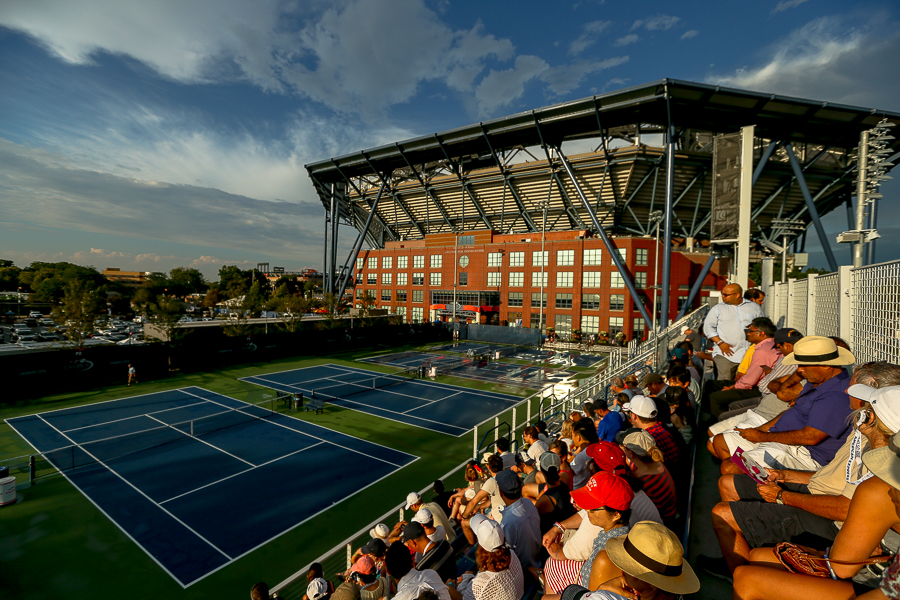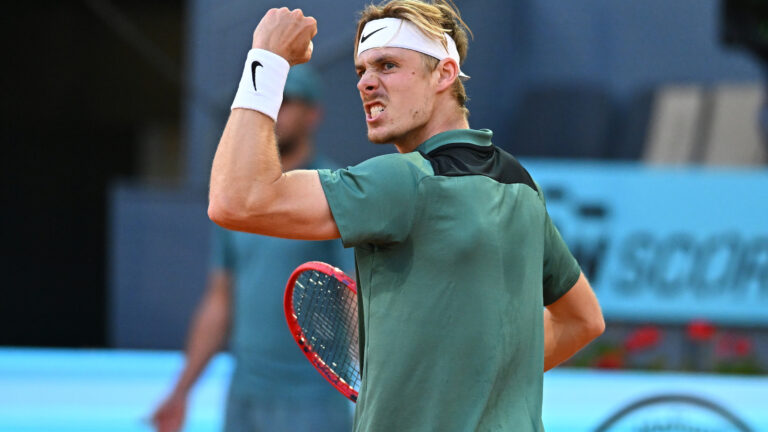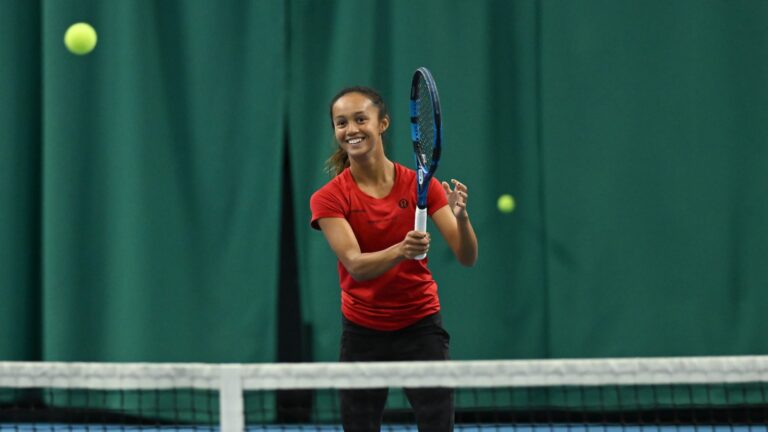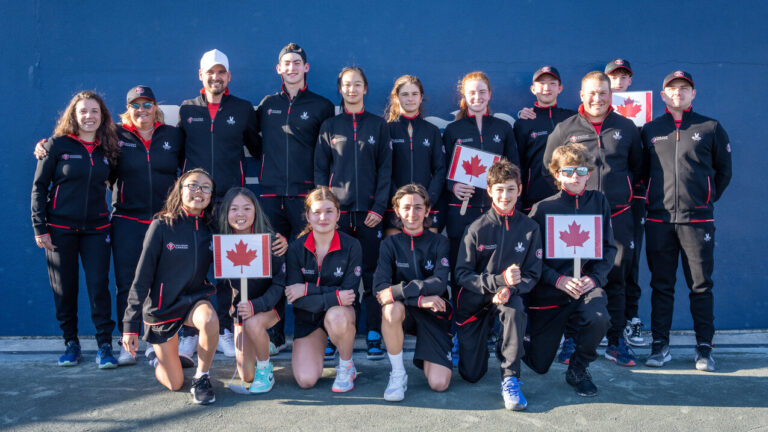
The last US Open without a retractable over Arthur Ashe Stadium was a tale of two dramatically different events – the men’s and women’s singles.
As much as can be made about the upsets of Andy Murray (Kevin Anderson) and Rafael Nadal (by Flavia Pennetta’s fiancé Fabio Fognini), the men’s draw basically unfolded according to expectations. It was No. 1 Novak Djokovic and No. 2 Roger Federer winding up in the final with the top seed prevailing in an entertaining if somewhat predictable contest.
Where the men were predictable, this year’s US Open women’s final was the most improbable in over 100 years of the event. A championship finale featuring a pair of 30-something Italians – No. 26-ranked Flavia Pennetta and No. 43 Roberta Vinci – was a match-up even a bunch of drunken sailors in Napoli could not have imagined. There’s probably no more logical way to explain it than one of the Vinci shoulder shrugs she gave after her shocking upset of Serena Williams in the semifinals.
In the final, as with the men, the better player prevailed. Pennetta, with six Grand Slam quarter-finals on her record and a career-high ranking of No 10, defeated Vinci, two Grand Slam quarter-finals and No. 11 as her best ranking, by a score of 7-6(4), 6-2.

It’s easy in hindsight to see that Williams, the overwhelming favourite as she attempted to complete the first Grand Slam sweep of the tennis majors since Steffi Graf in 1988, was not at ease with the enormous hype surrounding her quest. More than once before the event began she said that she was just anxious for the two weeks of the 2015 US Open to be over – a clear sign that she was feeling the pressure.
Still no one expected her hopes of a perfect Grand Slam season to be thwarted by the 5-foot-4 Vinci, an atypical women’s player with an affinity for net-play and hitting a one-handed backhand slice, in the semifinals.
But nerves clearly got the best of Williams and Vinci was able to stay calm in the frenzied pressure cooker of Arthur Ashe Stadium and pull off an upset of epic proportions. Props to her as she beat Williams 2-6, 6-4, 6-4, finishing with a flourish – two deft half-volley winners, including one on match point, in the final game.
A day later, the winner of the final always looked to be Pennetta, who had earlier beaten No. 22 seed Sam Stosur, No. 5 Petra Kvitova and No. 2 Simona Halep. She began very nervously but gradually settled and her superiority off the ground was too much for Vinci. After a competitive first set, it was plain to see that Vinci’s fatigue after her mammoth win over Williams the previous day, and her place in the Italian pecking order behind her lifelong friend, would make it almost impossible to come back and win.
Pennetta, 33, was rewarded for a career that has seen her rank in the Top 50 for 14 consecutive years dating back to two years after she turned pro at 18 in February 2000. But the only tournament title evenly remotely close to her surprise win at Flushing Meadows was her Indian Wells victory in 2014.
Still, she had made at least the quarter-finals in five of her previous six US Opens – including the semifinals two years ago. So going two steps further was not totally implausible for the willful, workmanlike Italian.
Her unforeseen victory just goes to show that a player has to be opportunistic. Serena Williams was out of the picture and Pennetta capitalized.
Her unlikely triumph is hardly unheard of in recent times in women’s tennis. Marion Bartoli, at age 28 and with a career-high ranking of No. 7, won Wimbledon just two years ago in 2013.
You wonder what players who have not won Grand Slams but have ranked as high as No. 1 such as Caroline Wozniacki and Jelena Jankovic, or No. 2 like Agnieszka Radwanska and Halep, must think about Pennetta sort of jumping the queue and beating them to a Grand Slam title.

Even Genie Bouchard, after her inspired win over Dominika Cibulkova in the third round and before her fateful fall later in the locker room, would have had a championship chance had Williams shown the vulnerability she did in the semifinals.
But you can only beat the players who show up across the net and Pennetta, by all accounts a popular player in the women’s locker room, was rewarded for doing just that at this year’s US Open.
Especially now that she has announced her retirement, she will appreciate not having her $3.3 million (US) in US Open prize money subjected to a healthy slice of government of Italy taxes. She officially lives in Verbier, Switzerland, which is kinder and gentler to its residents when it comes to tax collection.
Men’s champion Novak Djokovic will probably be placing his $3.8 million (US) prize money – it includes an Emirates US Open Series bonus of $500,000 (US) – in a financial institution in Monte Carlo, where he officially resides.
On Sunday night, after a rain delay of three hours, Djokovic defeated Federer 6-4, 5-7, 6-4, 6-4 for his 10th career Grand Slam title, his second at the US Open.
He joins an exclusive group with double-digit Grand Slam wins that includes 1920’s great Bill Tilden (10), Aussie immortal Rod Laver (11), Swedish legend Bjorn Borg (11), Pete Sampras (14), Rafael Nadal (14) and all-time leader Federer (17).

It seemed everyone in Arthur Ashe Stadium on Sunday was hoping Federer could get No. 18 but he was simply outplayed by Djokovic.
Looking back, there were a few what-ifs for the 34-year-old Swiss – including his converting only four of 23 break point chances. Djokovic was a more efficient six of 13. And even if the total points won was a mere two point margin for Djokovic – 147-145 – after the first set it always looked like a steep slope to victory for Federer against the resolute, impregnable Serb. Particularly in the backhand to backhand rallies, there was a sense Djokovic was just a little more solid, that he could angle the ball more dangerously and that he wouldn’t be the first to misfire.
Sadly for Federer-philes, the match eerily resembled the Wimbledon final in July, with Djokovic again winning sets one, three and four to seal the victory.
It was hard not to feel sorry for Federer. As great as he is and as well as he has played this year, Djokovic is just better. On the other hand, Federer has been on the other side of the domination dynamic. From 2004 to 2009, which were his best years, he beat one opponent, Andy Roddick, four times in Grand Slam finals – three at Wimbledon and once at the US Open. Federer has now lost to Djokovic in three of the last six Grand Slam finals.
Billie Jean King once said that champions shouldn’t necessarily retire when they’re on top. She claimed that in real life most people leave their occupations on the downside – not at their peak. So, she suggested, it was more realistic and like real life for a player to go on past his or her best.
In Federer’s case, it’s hard to know if he’s past his prime because he is still playing so well and even innovating with his game. But also, because Djokovic is so damned good and so proficient at countering Federer’s attacking game, he is faced with an undeniably superior 28-year-old rival who is at the crest of his tennis powers.
Federer, who incredibly has now completed a record 16 consecutive Grand Slam cycles – 64 tournaments in all – without missing a single event, still has legitimate hopes of winning an 18th Grand Slam. It just now seems that, as happened in this year’s US Open women’s event with Vinci upsetting Williams, he may need someone else to remove Djokovic from his path to the title.
Felix & Denis dynamite in doubles

Félix Auger-Aliassime and Denis Shapovalov are the 2015 US Open Junior Boys doubles champions after a 7-5, 7-6(3) victory in last Sunday’s final over Americans Brandon Holt (son of Tracy Austin) and Riley Smith.
It was the first Grand Slam event for Auger-Aliassime, 15, and the third for Shapovalov, 16, and they join five other Canadian boys to have won one or more Grand Slam doubles titles – Jocelyn Robichaud (3), Sébastien LeBlanc (2), Sébastien Lareau (2), Greg Rusedski (1) and Frank Dancevic (1).
The unseeded Auger-Aliassime and Shapovalov had their toughest matches early – needing match tiebreaks to win their first two matches. The second was 6-3, 2-6, [10-4] over compatriot Alejandro Tabilo of Toronto and his Portuguese partner Felipe Cunha-Silva.
By the quarter-finals, all eight seeded teams had been eliminated and Auger-Aliassime and Shapovalov won their final three matches in straight sets.
Both Canadians, Auger-Aliassime from Montreal and Shapovalov from Richmond Hill, Ont, are focused on their singles careers but they have skills that should allow future success in doubles.

The picture here was taken after their second-round victory last Wednesday, with the two having a little fun while posing.
Auger-Aliassime and Shapovalov are promising players on the international junior scene. The United States may have numbers on Canada when it comes to quantity with players such as Taylor Fritz, Tommy Paul, Reilly Opelka, Frances Tiafoe, Stefan Koslov, Michael Mmoh and William Blumberg but, in terms of quality, Auger-Aliassime and Shapovalov are right up there with the very best.
Tour merry-go-round continues
The highlight of this coming week will be the Davis Cup World Group semifinals to be played in Glasgow, Scotland, where Britain hosts Australia, and in Brussels, Belgium, where Argentina is the visiting nation.
Andy Murray, along with James Ward, will likely be the singles players for the Brits against an Australian team that will choose among Lleyton Hewitt, Sam Groth, Thanasi Kokkinakis and Bernard Tomic.
In Belgium, it almost surely will be David Goffin and Steve Darcis for the Belgians and, with Juan Martin del Potro and Juan Monaco injured, a choice among Leonardo Mayer, Federico Delbonis, Carlos Berlocq and Diego Schwartzman for the Argentines.
There are also eight World Group Playoffs ties going on and one rather improbable Group One relegation tie in Odense Idraetshal, Denmark. That one has Spain, captained by 1994 women’s Wimbledon champion Conchita Martinez, against the Danes and a modest line-up consisting of No. 283-ranked Frederik Neilsen, No. 909 Mikael Torpegaard, No. 963 Soren Hess-Olesen and unranked Thomas Kroman. The Spaniards, champions as recently as in 2011, are hoping to avoid a descent into the catacombs of European Group II with a power-packed foursome comprised of Rafael Nadal (7), David Ferrer (8), Roberto Bautista-Agut (22) and Fernando Verdasco (43).
Closer to home, the ever-popular National Bank Cup is being held this week in Quebec City at the PEPS arena on the campus of Laval University. The darling of the event this year is bound to be top seed and world No. 18 Madison Keys of the U.S. The No. 2 seed is current No.104, Mirjana Lucic-Baroni of Croatia (her ranking dropped 56 spots after the US Open) while No 3 is No. 48 Mona Barthel of Germany, who has already been eliminated.

In Toronto this week at Sobeys Stadium, there’s the third leg of four Canadian ITF Futures events. The $15,000 (US) Tevlin Men’s Futures features Frank Dancevic as its top seed. He is on quite a roll – having won Futures tournaments the past two weeks in Calgary and at Donalda Club in Toronto. Turning 31 on September 26th, Dancevic has won 11 matches in a row, including his first round at the Tevlin tournament on Monday.
Inside the US Open

With another US Open into the books, this East Gate message probably expresses the way tennis fans around the world feel – and maybe in just as many languages.
Feature photo: Mauricio Paiz



